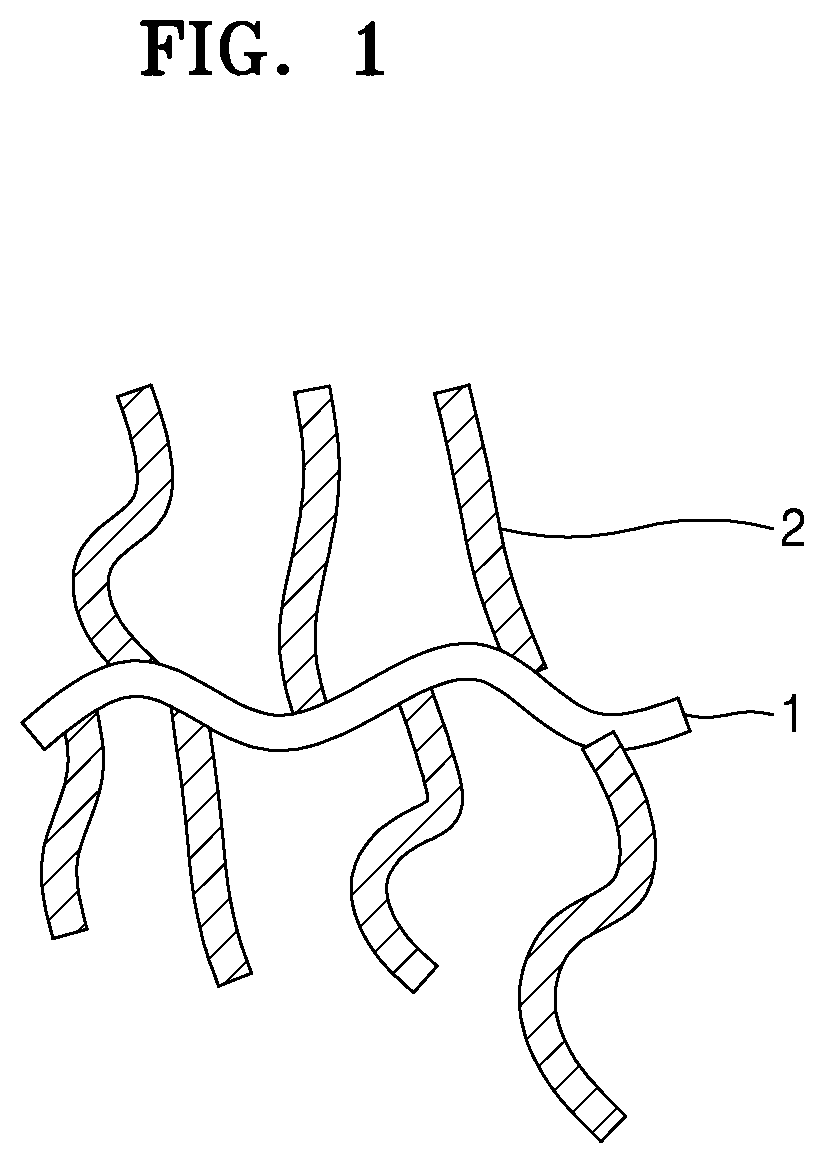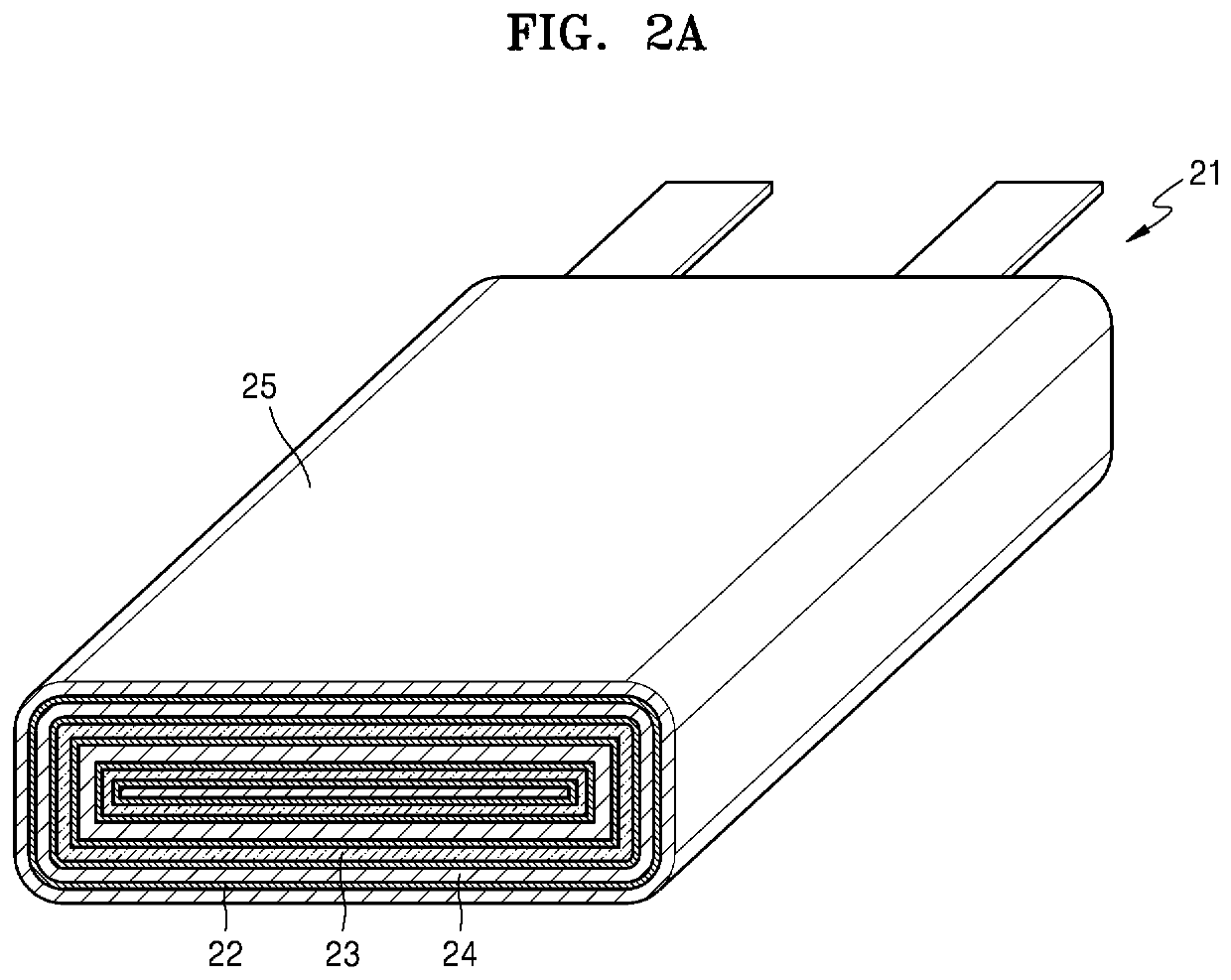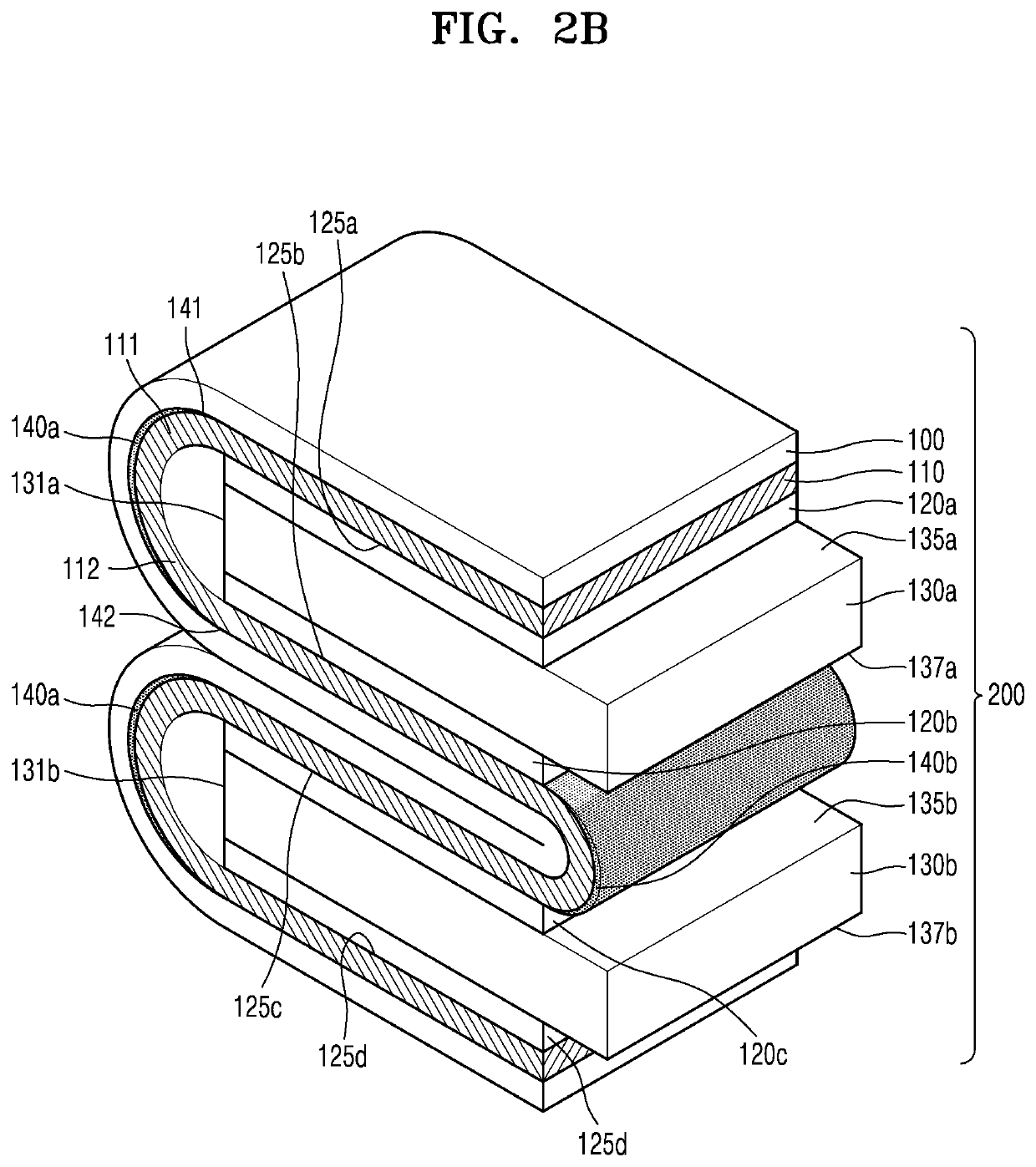Polymer electrolyte, method of preparing the polymer electrolyte, and lithium metal battery including the same
a polymer electrolyte and polymer electrolyte technology, applied in the direction of cell components, final product manufacturing, sustainable manufacturing/processing, etc., can solve the problems of reducing stability and reducing lifespan of lithium metal secondary batteries including such a lithium metal thin film, and achieve the effect of improving high-voltage stability
- Summary
- Abstract
- Description
- Claims
- Application Information
AI Technical Summary
Benefits of technology
Problems solved by technology
Method used
Image
Examples
example 1a
Preparation of Polymer Electrolyte
[0322]A polyoxyethylene methacrylate-monofunctional fluoromethacrylate copolymer electrolyte was prepared as follows.
[0323]Monofunctional fluoromethacrylate of Formula 8a, lithium bis(trifluoromethanesulfonyl)imide (LiTFSI) as a lithium salt, poly(ethylene glycol) methyl ether acrylate (POEM) of Formula 7a, and tetrahydrofuran (THF) as a solvent were mixed. Here, an amount of THF was about 500 parts by weight based on 100 parts by weight of the total amount of monofunctional fluoromethacrylate, LiTFSI, and POEM of Formula 7a. Also, a molar mixing ratio of POEM to monofunctional fluoromethacrylate was about 2:1.
[0324]
[0325]In Formula 8a, b is 8,
[0326]
[0327]In Formula 7a, a is 10.
[0328]A photoinitiator (Darocur® 1173, available from BASF) was added to the mixture to obtain a polymer electrolyte composition. An amount of the photoinitiator was about 5 parts by weight based on 100 parts by weight of monofunctional fluoromethacrylate.
[0329]The polymer el...
example 1b
Preparation of Polymer Electrolyte
[0333]A polymer electrolyte including a copolymer represented by Formula 3a was prepared at a thickness of 30 μm in the same manner as in Example 1a, except that a molar mixing ratio of POEM to monofunctional fluoromethacrylate was changed to about 5:1.
[0334]
[0335]In Formula 3a, a is 10, b is 8, m is 0.83, and n is 0.17.
[0336]The polymer of Formula 3a is a random copolymer having a degree of polymerization of about 200 and a weight average molecular weight ranging from about 80,000 to about 100,000.
example 1c
Preparation of Polymer Electrolyte
[0337]A polymer electrolyte including a copolymer represented by Formula 3a was prepared at a thickness ranging from about 20 μm to about 30 μm in the same manner as in Example 1a, except that succinonitrile (SN) was added during preparation of the polymer electrolyte composition. An amount of succinonitrile was about 20 parts by weight based on 100 parts by weight of the total weight of the polymer electrolyte composition.
PUM
| Property | Measurement | Unit |
|---|---|---|
| Young's modulus | aaaaa | aaaaa |
| ion conductivity | aaaaa | aaaaa |
| glass transition temperature | aaaaa | aaaaa |
Abstract
Description
Claims
Application Information
 Login to View More
Login to View More - R&D
- Intellectual Property
- Life Sciences
- Materials
- Tech Scout
- Unparalleled Data Quality
- Higher Quality Content
- 60% Fewer Hallucinations
Browse by: Latest US Patents, China's latest patents, Technical Efficacy Thesaurus, Application Domain, Technology Topic, Popular Technical Reports.
© 2025 PatSnap. All rights reserved.Legal|Privacy policy|Modern Slavery Act Transparency Statement|Sitemap|About US| Contact US: help@patsnap.com



